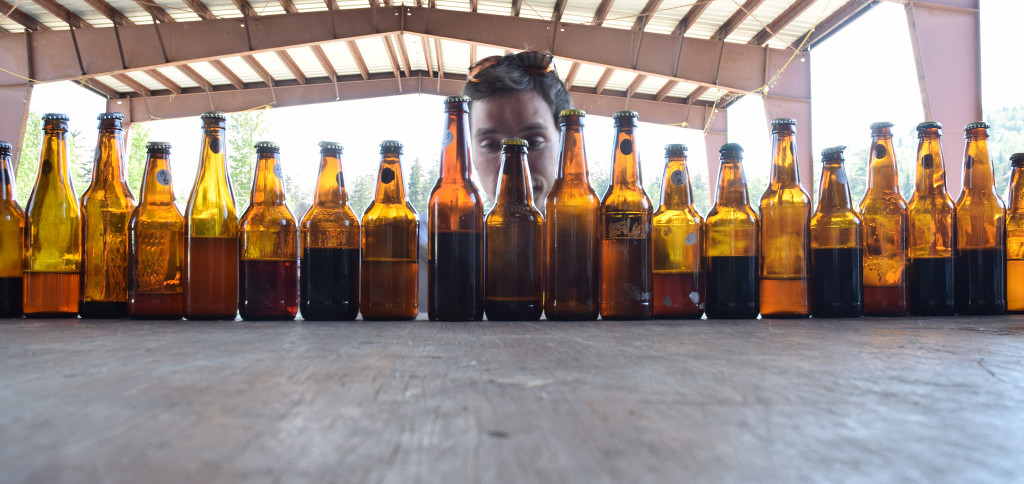Hop to it, Part Three: Free Beer!

UPDATE: The window for submitting names for our beer is now closed. Thanks to everybody that weighed in. Now head on over and vote for your favorite!
Two months ago, you told us to brew a Russian Imperial Stout. A month ago, we made good on our promise. However, an unnamed beer is a terrible thing, so we want to humbly ask our readers for their help once again in naming the beer that sits aging in our cooler. Of course, in order to elicit participation, there’s got to be some sort of incentive, and that’s where this article’s title comes into play. Once we’ve collected the submissions, we’re going to publish them in another piece and put them up for a vote. We’ll be organizing a tasting event and the reader whose title wins crowd favorite will be invited to sample our thus far unnamed Russian Imperial Stout.
Below, I’m going to include a brief history of the Russian Imperial Stout as a beer variety and some tasting notes from our brewers to get the creative juices flowing. I would absolutely encourage a reread of the brew day article to get a better understanding of the process. What we’re looking for from our readers is a contextually appropriate name along with a three-to-five sentence explanation of why you chose it. The survey will run sometime in the next two weeks, and we’ll announce the winner shortly thereafter.
Submit submissions to me via email Alex.Hecht@warontherocks.com or add them as a comment to this piece. If they’re short, feel free to tweet @alexhechtdc, as well. All submissions will be considered.
Russian Imperial Stout: Despite its name, this is actually an English beer that was brewed for export to Russia and the Baltic states. Russian Imperial Stouts were brewed with high alcohol and high hop levels to make them stable for their transcontinental journey. This style was said to have been very popular in the Russian Imperial Court, and a favorite of Empress Catherine the Great.
Tasting Notes: As we mentioned previously, this beer needs to age for a while. We’re talking four to six months before it’s really ready to go. That said, it’s important to taste the beer as it ages, so that you have some understanding of what it will taste like in the future and how it’s maturing. To use brewing parlance, our beer is “green” right now, meaning it’s young and not fully conditioned. Also, this beer has an ABV of 12.5%, so it’s a “sipper” not a “chugger.”
Appearance: Jet black, no opacity, very slick oil.
Smell: Strong alcohol on the nose, subtle hints of coffee, chocolate, malt forward.
Mouthfeel: Thick and viscous, but smooth and not astringent.
Taste: Strong alcoholic burn, not astringent, with elements of fusel alcohol (which should condition out). The beer has a slight sherry oxidation, with flavors of coffee, chocolate, and to a lesser extent nuts and caramel. Bitterness in the beer rounds out the flavor nicely. The finish is clean with a caramel aftertaste.
Now that you’re armed with some context and knowledge, get to naming this beer. We can’t do it without you!
Alex Hecht is editor of Molotov Cocktail. He works as a Security Analyst in Washington, DC. Before working for the man, he managed the Gibson, a cocktail bar in DC’s U Street corridor. Alex’s life is admittedly mellower now, but his liver probably thanks him for that.
Photo credit: James Brooks

